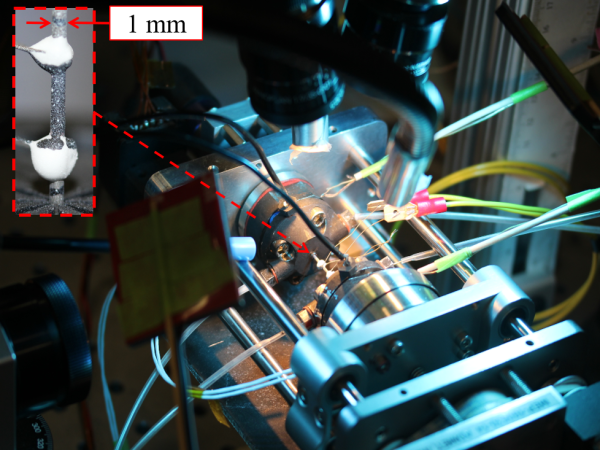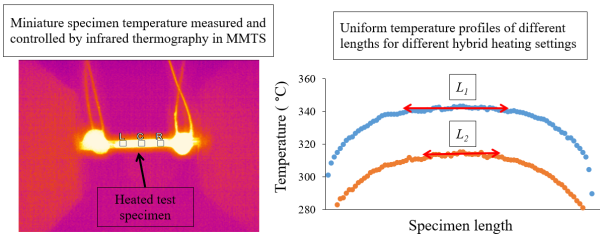
Materials that can withstand extreme temperatures are used in jet engines, nuclear power plants and many civil engineering structures. The development process of these materials is expensive and time-consuming because it requires rigorous testing to measure material strength in an extreme environment.
Researchers can save processing time by testing a smaller size specimen. However, it is much harder to perform material testing on a small specimen since both the application of a thermal load on a small specimen and the measurement of deformation are experimentally challenging. The experimental techniques used to test a standard size specimen cannot be used for a small test specimen.
Tasnim Hassan, CCEE professor, and Farhan Rahman, CCEE postdoctoral researcher, collaborated with Department of Mechanical and Aerospace Engineering researchers Gracious Ngaile and Lin Li, to devise innovative experimental solutions that allow high-temperature material testing using small-size specimens.
The researchers developed a novel heating technique to apply uniform temperature distribution on a small specimen called hybrid heating, which uses Joule heating by passing electricity through a metal test specimen in conjunction with small custom-developed heating coils. When electricity passes through a metal test specimen, it heats up due to its internal resistance to the flow of current. Since this resistance is dependent on the cross-section of the test specimen — which changes during a test — a non-contact temperature control system using infrared thermography was devised. This novel hybrid heating system allows researchers to achieve uniform temperature on a small test specimen.

To measure the deformation of a small test specimen at high temperatures, researchers used the stereo digital image correlation (stereo-DIC) method — an optical technique that relies on multiple cameras to capture images of the test specimen as it deforms.
“What is unique about our stereo-DIC setup is that we developed an optimization framework that addresses the relationships among test specimen size and curvature, specimen to camera distance, stereo-angle, lens and camera sensor properties,” Rahman said. “This ensures high measurement accuracy from the stereo-DIC setup, which is important for accurate material property determination.”
The non-contact temperature control and deformation measurement systems allow researchers to measure material properties at high temperatures using small test specimens. The novel experimental techniques were devised as part of a new multiaxial miniature testing system (MMTS) researchers developed through a National Science Foundation research grant. The MMTS was designed to perform in-situ tests within a scanning electron microscope and thereby correlate material microstructures to their properties.
